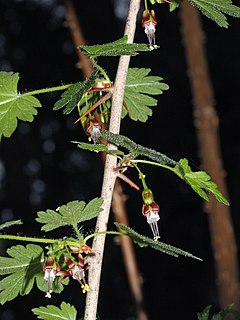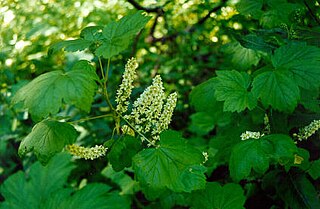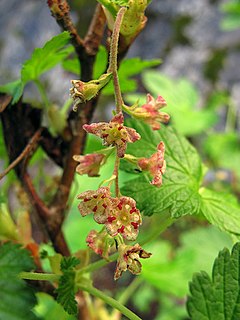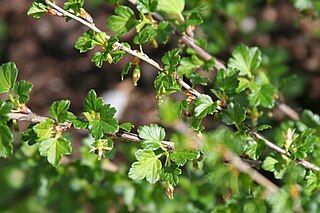| Ribes echinellum | |
|---|---|
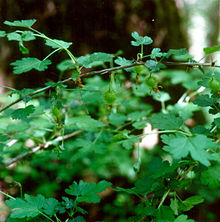 | |
| Scientific classification | |
| Kingdom: | Plantae |
| Clade: | Angiosperms |
| Clade: | Eudicots |
| Order: | Saxifragales |
| Family: | Grossulariaceae |
| Genus: | Ribes |
| Species: | R. echinellum |
| Binomial name | |
| Ribes echinellum (Coville) Rehder 1926 | |
| Synonyms [1] | |
| |
Ribes echinellum, the Miccosukee gooseberry, [2] is a very rare North American shrub in the currant family, native to the southeastern United States. [3] It has only a few known populations. The Florida populations was discovered first, in 1924 at Lake Miccosukee. The South Carolina populations were found in 1957 and 1981, and the first is protected at Steven's Creek Heritage Preserve. [4]
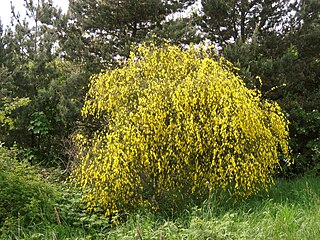
A shrub or bush is a small- to medium-sized woody plant. Unlike herbaceous plants, shrubs have persistent woody stems above the ground. They are distinguished from trees by their multiple stems and shorter height, and are usually under 6 m (20 ft) tall. Plants of many species may grow either into shrubs or trees, depending on their growing conditions. Small, low shrubs, generally less than 2 m (6.6 ft) tall, such as lavender, periwinkle and most small garden varieties of rose, are often termed "subshrubs".

Florida is the southernmost contiguous state in the United States. The state is bordered to the west by the Gulf of Mexico, to the northwest by Alabama, to the north by Georgia, to the east by the Atlantic Ocean, and to the south by the Straits of Florida. Florida is the 22nd-most extensive, the 3rd-most populous, and the 8th-most densely populated of the U.S. states. Jacksonville is the most populous municipality in the state and the largest city by area in the contiguous United States. The Miami metropolitan area is Florida's most populous urban area. Tallahassee is the state's capital.

Lake Miccosukee is a large swampy prairie lake in northern Jefferson County, Florida, located east of the settlement of Miccosukee. A small portion of the lake, its northwest corner, is located in Leon County. The small town of Miccosukee, Florida is located on the north eastern shore of the lake in Leon County.
Contents
Ribes echinellum is a shrub up to 150 cm (5 feet) tall with spines at the nodes (places where the leaves are attached to the stem). Leaves are round or egg-shaped with three lobes. It has whitish or pale yellow flowers and purple spine-covered berries. [5] [6]



